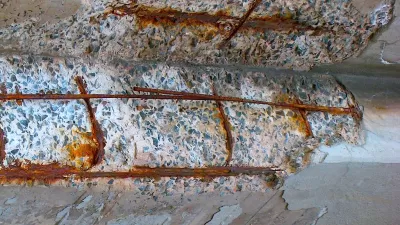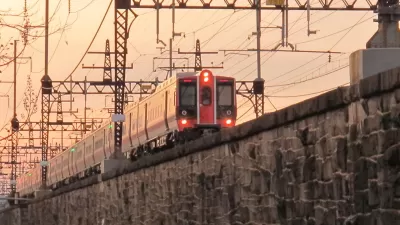Compared to Europe's high-speed rail, paved roads, and underground power lines, America lags behind with its unreliable trains, potholes, and overhead power lines. Uwe E. Reinhardt questions why Americans put up with the decaying infrastructure.

"Arriving at a destination on time, something Europeans take largely for granted, is relatively rare on Amtrak," writes Reinhardt. "Furthermore, the train in Europe or Asia is likely to have traveled at much higher speed. The tracks there are so smooth that one could easily carry an open cup of coffee along several cars or work on the computer." This cannot be said in America, where cars bump over potholes, trains screech along old rails, and departure times are often inaccurate. Reinhard remarks, "Why and how Americans, who pride themselves on being fussy consumers, have put up with this mid-20th-century rail system is a mystery."
"Even more wondrous than the archaic subway and rail system and potholes in the streets," continues Reinhardt, "is the system of distributing electric power to households and factories in large parts of the Northeastern United States." Power is carried through lines strung on leaning poles, "which are vulnerable to powerful storms, like Hurricane Sandy," in contrast to most of Europe's underground and well-maintained power lines. Reinhardt brings up an anecdote in which his visiting friend from Germany "burst out laughing at the abundance of wires in every direction, something he had seen only on his travels to the developing world."
Why do Americans "put up so fatalistically with this old-fashioned and decaying infrastructure"? Reinhardt calls for a better balance between the private and public sector to bring America's infrastructure up to 21st-century standards instead of suffering "for days or weeks without light, heat and transportation, verbally shaking our fists at the power companies but leaving it at that."
FULL STORY: America’s Mid-20th-Century Infrastructure

Alabama: Trump Terminates Settlements for Black Communities Harmed By Raw Sewage
Trump deemed the landmark civil rights agreement “illegal DEI and environmental justice policy.”

Planetizen Federal Action Tracker
A weekly monitor of how Trump’s orders and actions are impacting planners and planning in America.

The 120 Year Old Tiny Home Villages That Sheltered San Francisco’s Earthquake Refugees
More than a century ago, San Francisco mobilized to house thousands of residents displaced by the 1906 earthquake. Could their strategy offer a model for the present?

Ken Jennings Launches Transit Web Series
The Jeopardy champ wants you to ride public transit.

BLM To Rescind Public Lands Rule
The change will downgrade conservation, once again putting federal land at risk for mining and other extractive uses.

Indy Neighborhood Group Builds Temporary Multi-Use Path
Community members, aided in part by funding from the city, repurposed a vehicle lane to create a protected bike and pedestrian path for the summer season.
Urban Design for Planners 1: Software Tools
This six-course series explores essential urban design concepts using open source software and equips planners with the tools they need to participate fully in the urban design process.
Planning for Universal Design
Learn the tools for implementing Universal Design in planning regulations.
Clanton & Associates, Inc.
Jessamine County Fiscal Court
Institute for Housing and Urban Development Studies (IHS)
City of Grandview
Harvard GSD Executive Education
Toledo-Lucas County Plan Commissions
Salt Lake City
NYU Wagner Graduate School of Public Service



























